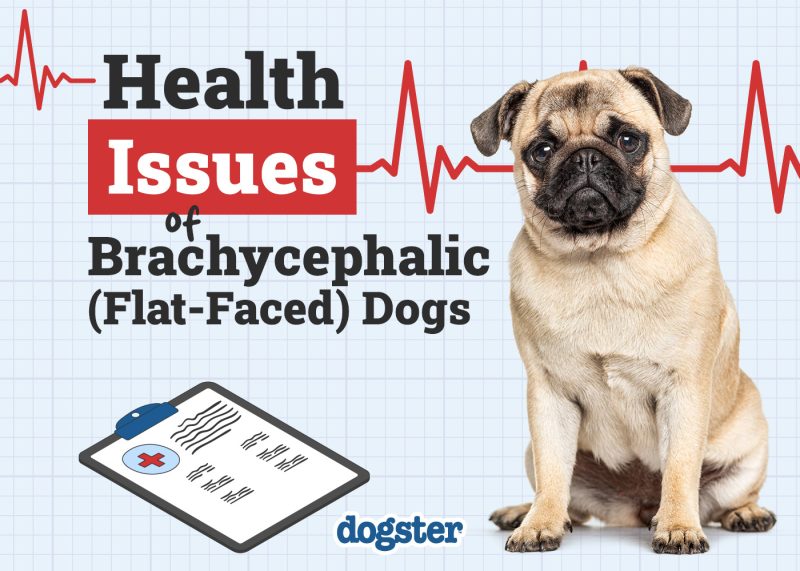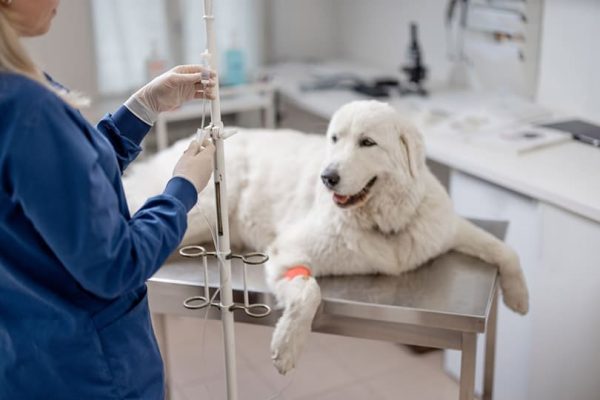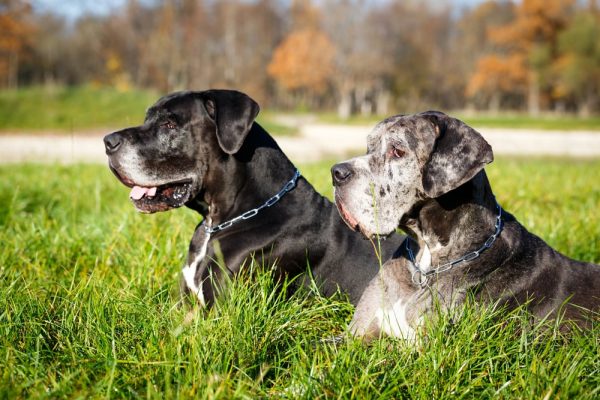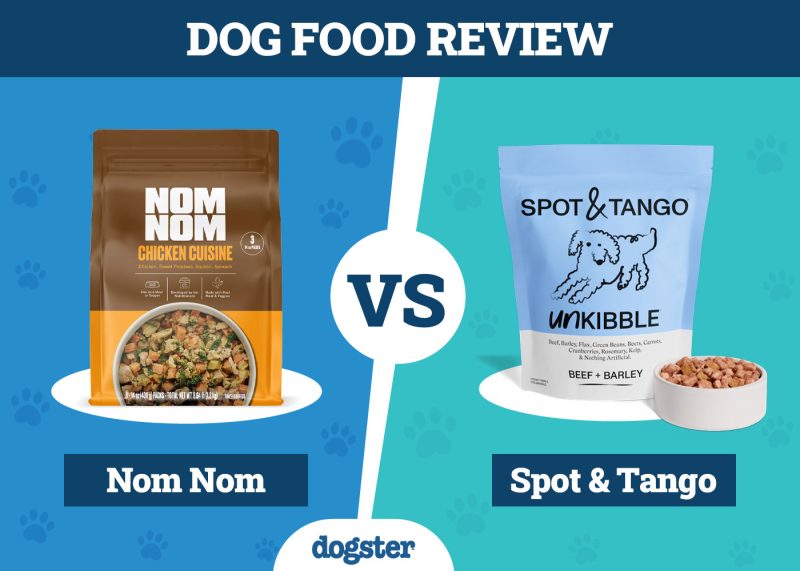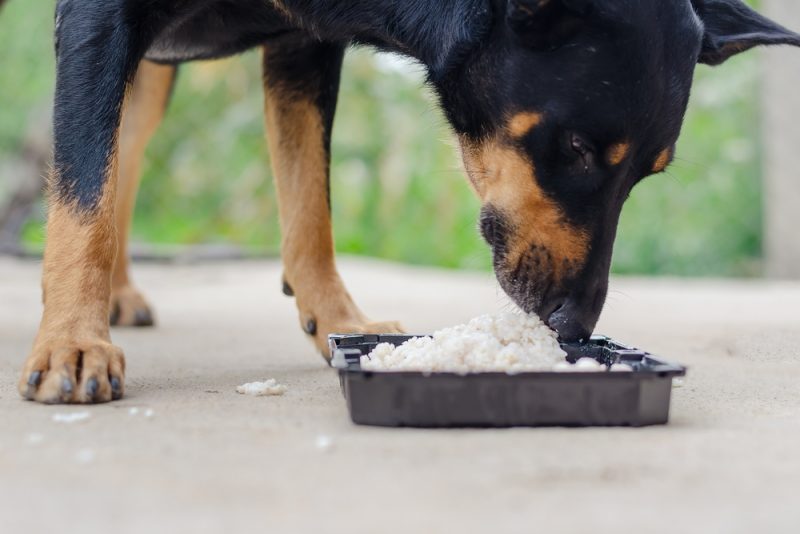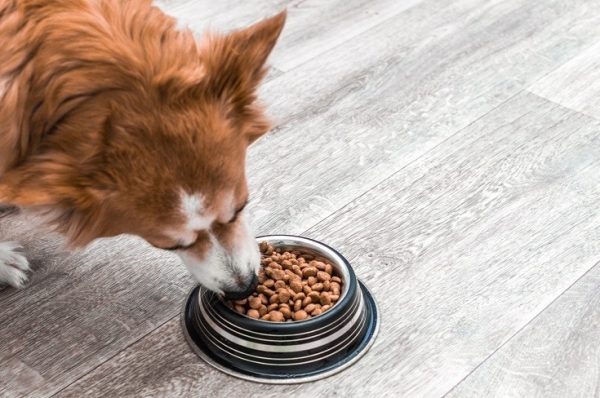IVDD is a common condition in French Bulldogs. It stands for “intervertebral disc disease.” Frenchies are the second most common dog breed impacted by this condition, after Dachshunds. You might be interested in this disease if you’re considering a pet Frenchie or your pet is currently experiencing spinal problems.
We’ll discuss why French Bulldogs are so prone to this disease, what to look for, and how it can be prevented so you can make informed choices for your pup.

What Is IVDD in French Bulldogs?
IVDD stands for “intervertebral disc disease,” and it is a condition affecting the spine and spinal cord. To understand this disease, you will need to understand the normal anatomy of the dog. The spine, also known as the vertebral column, is made of bones called vertebrae, which are divided into categories by region:
- Cervical vertebrae are the vertebrae of the neck. Dogs have seven cervical vertebrae, named C1-C7, with C1 being the first vertebra closest to the skull.
- Thoracic vertebrae are vertebrae of the spine in the chest region. Dogs have 13 thoracic vertebrae. These vertebrae are named T1-T13.
- Lumbar vertebrae are vertebrae of the back above the abdomen. Dogs have seven lumbar vertebrae. They are named L1-L7.
- Sacral vertebrae are the three vertebrae that fuse to form the sacrum attached to the pelvis.
- Caudal vertebrae are vertebrae of the tail. Dogs usually have about 20, but this is variable. Frenchies have much fewer than other dogs. They are named Cd, followed by the number assigning their position in the tail.
The main function of the vertebrae is to support the skeleton and protect the spinal cord. The spinal cord sends nerve impulses to the muscles and controls conscious movement. It also houses the nerve pathways for reflexes, which do not require conscious thought from the brain.
Between each vertebra are discs that cushion them against forces acting on the spine. When the discs have problems, they can cause pain and even press on the spinal cord. This is known as IVDD; the pressure on the spinal cord can cause problems with movement and reflexes.
You might hear your vet name the IVDD based on the location of the diseased disc. For example, IVDD T13-L1 means the disc between the last thoracic and first vertebrae is affected.
There are two types of IVDD, but Type I IVDD is the most common neurological disorder in French Bulldogs.1 Think of an intervertebral disc as a jelly donut with a filling inside and an outer hard layer. In type I IVDD, the filling shoots out and damages the spinal cord. The disc then hardens and loses its cushioning abilities.
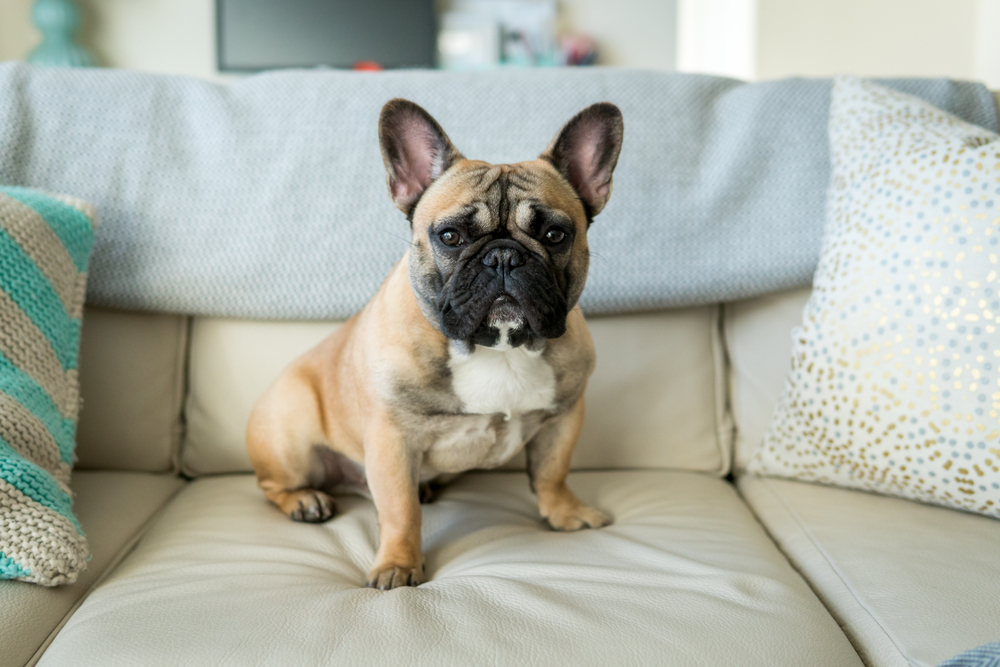
What Are the Signs of IVDD?
If you have a Frenchie, you should know the signs to look for and get your dog help immediately if you suspect IVDD. Depending on the extent of spinal cord compression, IVDD can be mild to severe. Starting from mild to more severe, IVDD can cause the following signs:
- Neck or back pain
- Holding head low
- Not jumping up
- Panting
- Shaking
- Poor appetite
- Yelping
- Reduced activity
- Abnormal reflexes
- Wobbly gait
- Weak limbs
- Paralysis
- Incontinence
If you are concerned about the health and well-being of your pet, we recommend getting in touch with a vet for guidance.
Did you know you can speak to a veterinarian without having to travel? Just head over to PangoVet. It's an online service where you can talk to a vet online and get the advice you need for your pet — all at an affordable price!

What Are the Causes of IVDD in French Bulldogs?
Two underlying genetic conditions predispose French Bulldogs to IVVD. A duplication of the FGF4 gene onto another chromosome is common in French Bulldogs.2 This causes a problem with cartilage development called chondrodystrophy.
The discs of dogs with at least one copy of the gene degenerate early and are more prone to rupture, leading to Type 1 IVDD. Fortunately, a genetic test is available so ethical breeders can avoid breeding pups with chondrodystrophy.
The second condition is related to the stumpy tail. When we breed for the unusual vertebrae in the stumpy tail of the French Bulldog or the Pug’s curly tail, we are inadvertently breeding for abnormal vertebrae in the spine. Abnormal vertebrae called hemivertebrae are common in French Bulldogs.
They can cause an abnormal curvature of the spine that increases the risk of IVDD due to wear and tear on the discs. Hemivertebrae can also cause spinal compression on their own if they are severe, causing similar signs to IVDD. Some studies suggest that selecting against severely deformed tails is an easy prevention strategy in breeds susceptible to hemivertebrae.
Finally, in many cases, strenuous physical activity or an injury is the final straw that causes IVDD disc rupture. This isn’t true for all dogs, but running, jumping, or falling can trigger a disc rupture. Obesity could also contribute to this disease.
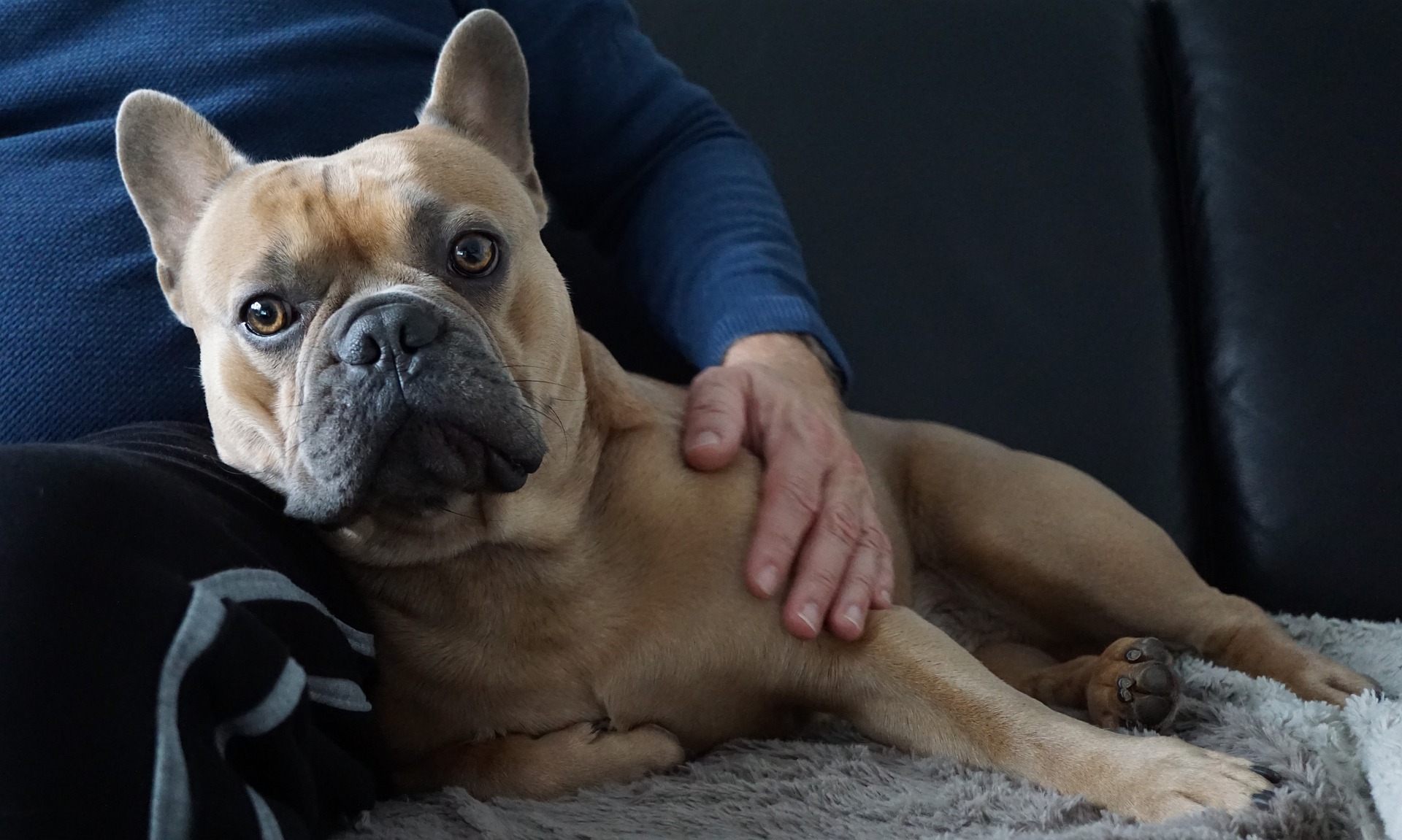
Diagnosing IVDD in Your French Bulldog
Your veterinarian will first gather your dog’s history. They may suspect IVDD if your dog has sudden onset pain or neurological deficits. They will examine your dog’s neck and back for any painful areas that could reveal the location of the disc problem. A neurological examination testing your dog’s reflexes can help them localize the issue and diagnose your dog.
Plain X-rays can be taken but don’t often show any changes immediately after a disc rupture. This is because X-rays don’t show soft tissue; they only show secondary bony changes that occur with time. Your veterinarian may recommend advanced imaging techniques like MRI or CT scans, especially if they think your pup needs surgery.
Not all dogs will receive the recommendation to undergo surgery, but if your dog can’t walk, surgery sooner rather than later presents the best chance of recovery.
How Do I Care for a French Bulldog With IVDD
Following your vet’s instructions is extremely important if you have a French Bulldog with IVDD. They should be your first point of contact if you have questions about your dog’s care. However, we have some tips for you when nursing your dog at home. Some of these won’t apply to your dog, depending on the severity of their condition, but in general we recommend:
- Setting up a crate: Part of your veterinarian’s plan will be strictly resting your dog. A comfortable crate is the best way to do this. Choose a crate your dog can comfortably get up and turn around in. Add thick, comfortable bedding, food, and water bowls, and put them in a temperature-controlled room. Providing forage toys and puzzles will keep their mind occupied while resting.
- Giving them their medications: As IVDD is painful, your veterinarian will prescribe pain relief medications. Some dogs need multiple types of pain relief, so if you feel your dog is still in pain, you can let your veterinarian know. Follow the label instructions on the medications and ensure you give them at the correct times.
- Help them with toileting: If your dog has trouble walking, you may need to hold them in position to use the toilet. A towel slung under the belly is also a good way to give them extra support when toileting. If your dog is incontinent, put down puppy pads or use a diaper to prevent them from soiling their bedding. You must change them frequently and keep their bottom clean to avoid dermatitis. If they can’t stand, turn them four to five times a day to prevent pressure sores.
- Massage your dog: Massaging your dog’s weak or paralyzed legs will help get blood flow in the leg. In the first 3–5 days, massage them as many times as possible; after that, massaging them three times a day is helpful.
- Passive range of motion (PROM) exercises: PROM exercises help maintain muscle mass when your dog’s legs are paralyzed. To do these exercises, have your Frenchie lying on their side and gently move each leg through its normal range of motion, from extension to flexion. Do 20 repetitions and three sets in each affected leg.
- Monitor their signs: If your dog’s pain, movement, reflexes, or any other area of their health is deteriorating, contact your treating veterinarian. Sometimes, cases of IVDD get worse, meaning surgery is required down the track. Dogs can also develop side effects from their medication, so monitoring them vigilantly is important.
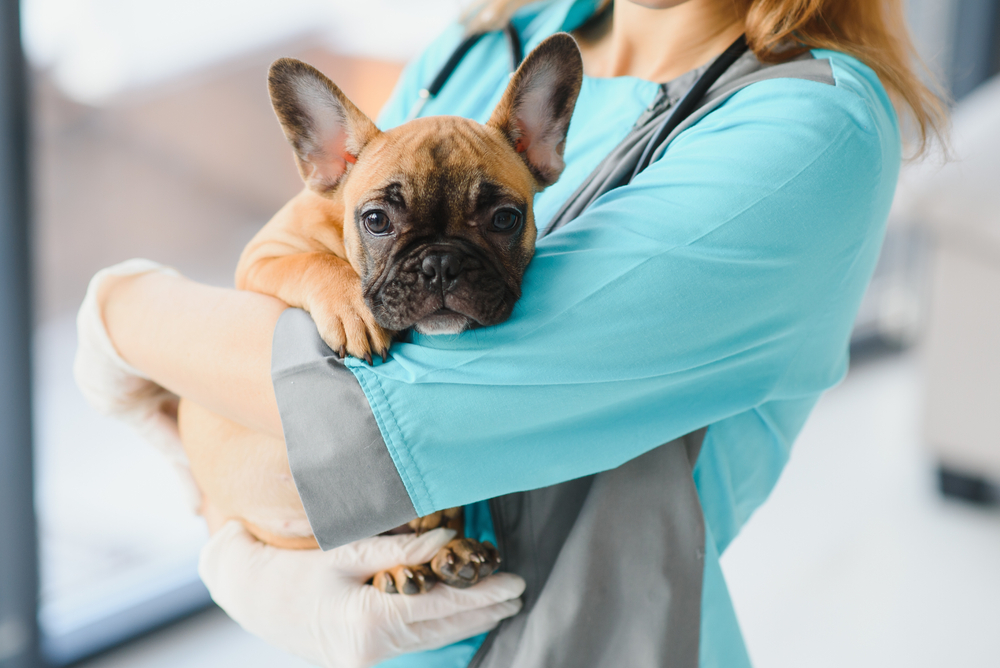

Frequently Asked Questions
Is It OK to Walk a Dog With IVDD?
Your veterinarian will likely recommend a rest period for several weeks to months after IVDD is diagnosed, depending on your dog’s case. During this time, you should not allow your dog to navigate stairs, run around, or jump, including in the house, as this can make things worse.
You can walk them out to the toilet on a leash. If your pup has neck pain, a harness is better than a collar for walking them out. You can carry your Frenchie out to the toilet, but they should still be on a leash if they aren’t paralyzed.
Before restarting normal exercise, you should have a recheck consultation with a veterinarian to get the all-clear. They may recommend physical therapy as part of the rehabilitation process.
How Much Is IVDD Surgery for a French Bulldog?
Embrace Pet Insurance says the surgery can cost $1,500 to $4,000, and the advanced imaging needed for surgical planning can cost $1,000 to $3,000. Your dog may also need additional medication or physical therapy. Anesthetic and surgical complications at any stage can also increase the costs.
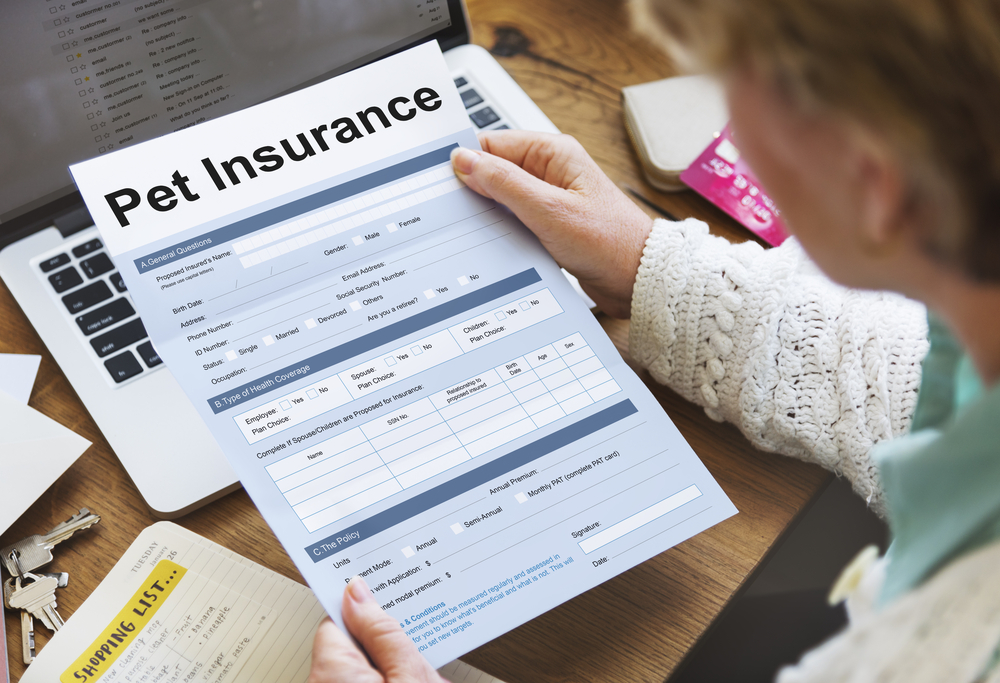
How Long Will My Dog Live With IVDD?
IVDD is not usually fatal, aside from dogs being put down. Dogs can live a normal lifespan if they recover from IVDD, but it depends on many factors, such as the severity of the initial injury and whether or not surgery is performed if needed.
Progressive myelomalacia is a complication of IVDD in some dogs that is sadly fatal as it eventually prevents dogs from breathing properly. It causes the spinal cord to progressively hemorrhage and die off, and dogs develop worsening neurological signs 2–14 days after the initial injury. It is expected to occur in 10%–30% of dogs that lose the sensation of deep pain due to IVDD.
Should You Put a Dog With IVDD Down?
In some, but not all cases, you should put a dog with IVDD down. Many dogs improve even without surgery, but it can take months. If you are considering euthanasia for your dog with IVDD, we think waiting at least 2–3 months to see if things improve on their own is a good idea. Movement, incontinence, and pain are all quality-of-life factors to consider when making this decision. Your finances and personal beliefs may also impact this decision.
You should have an open discussion with your veterinarian about your thoughts and feelings and ask them about the prognosis for your dog. Euthanasia is more likely to be appropriate for dogs that haven’t been able to have surgery when needed, have lost movement and haven’t regained it in months, are in chronic pain, or can no longer control their toileting habits.

Final Thoughts
IVDD can be devastating, especially when it is severe enough to warrant surgery. Unfortunately, many French Bulldogs are impacted by this disease, which is all too common in the breed. Good breeding and genetic testing may help reduce the prevalence of IVDD in Frenchies. We want this breed to thrive and beat its reputation as one of the shortest-living dog breeds.
Featured Image Credit: Tatiana Katsai, Shutterstock





